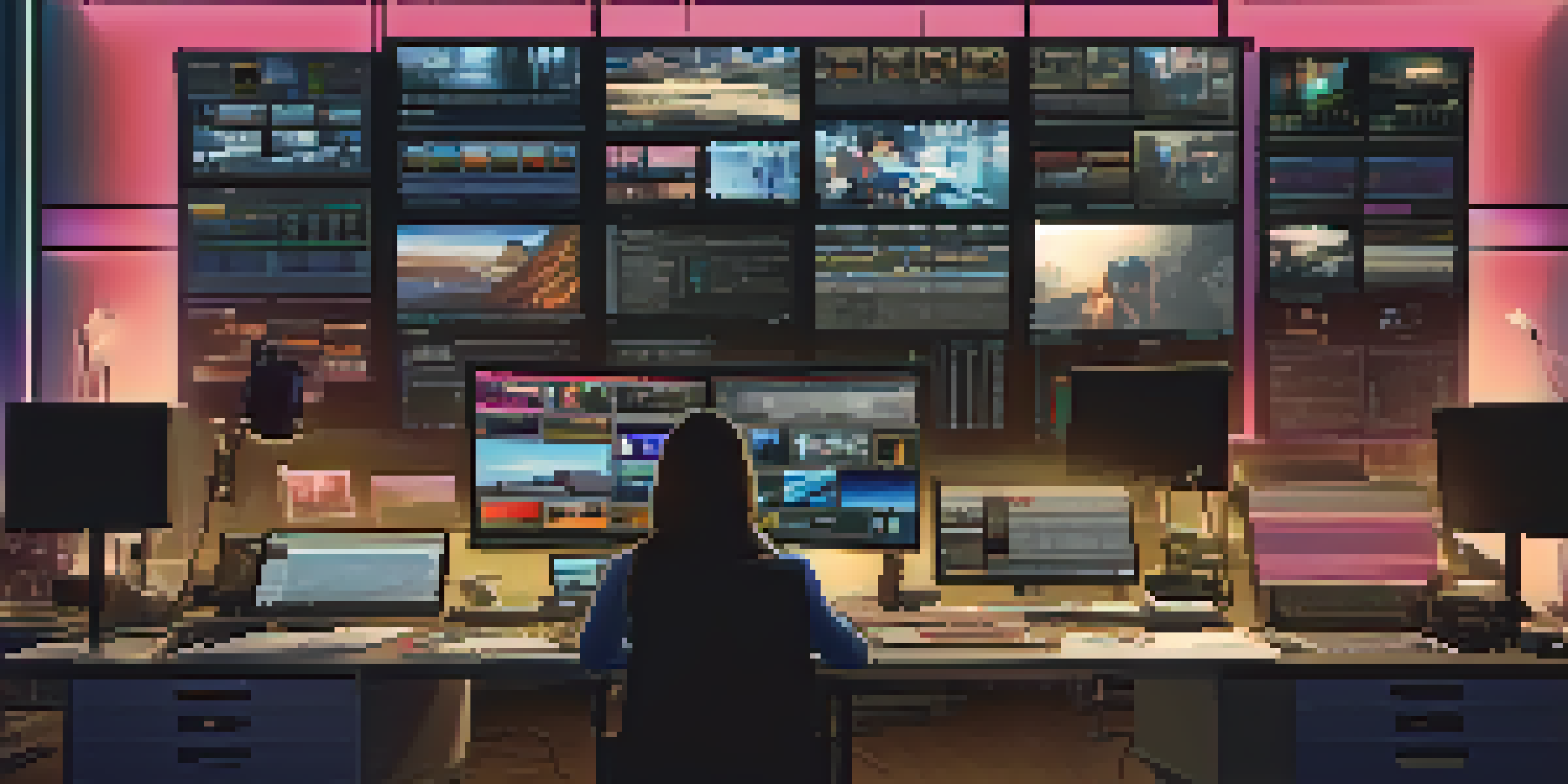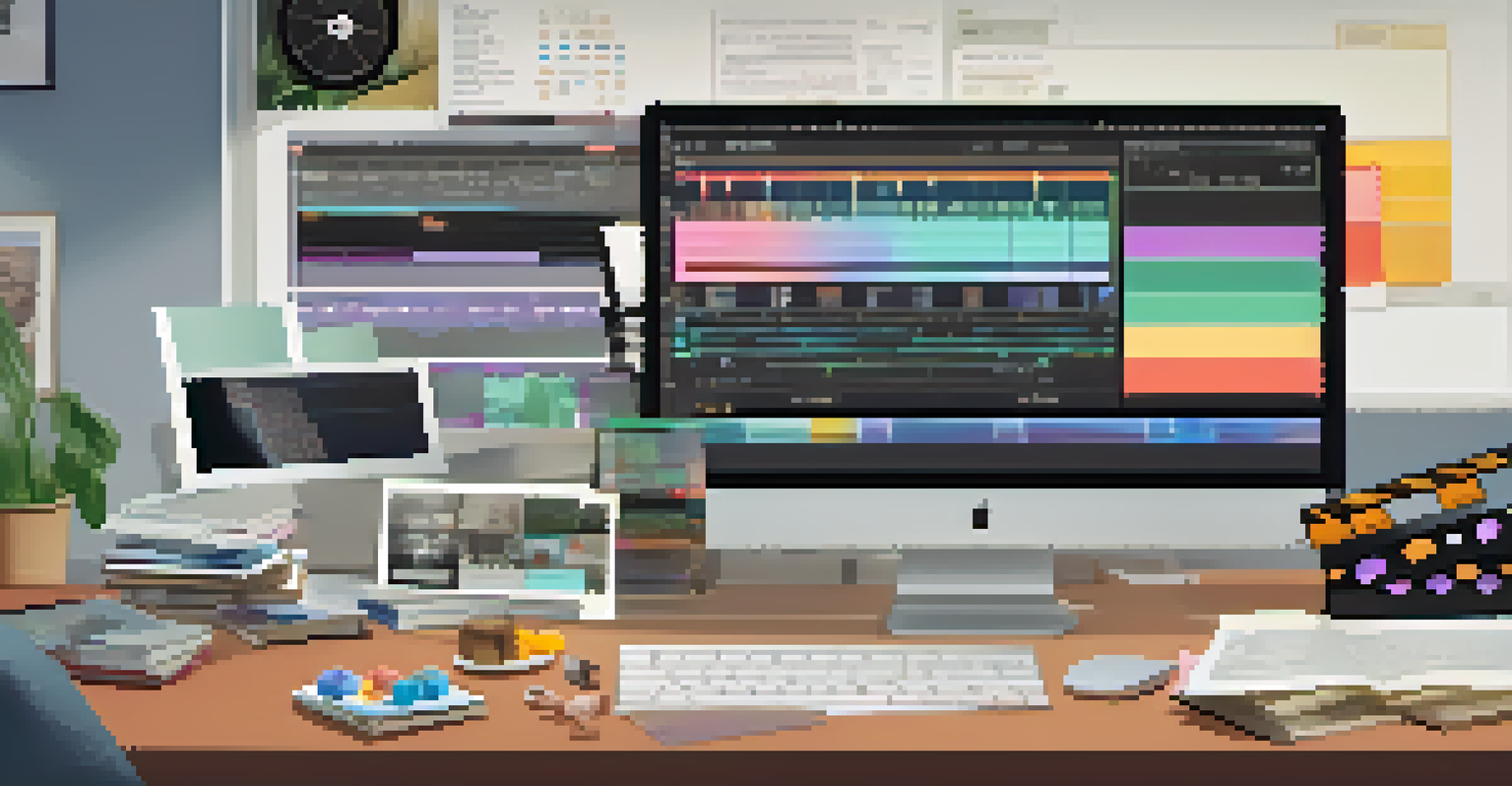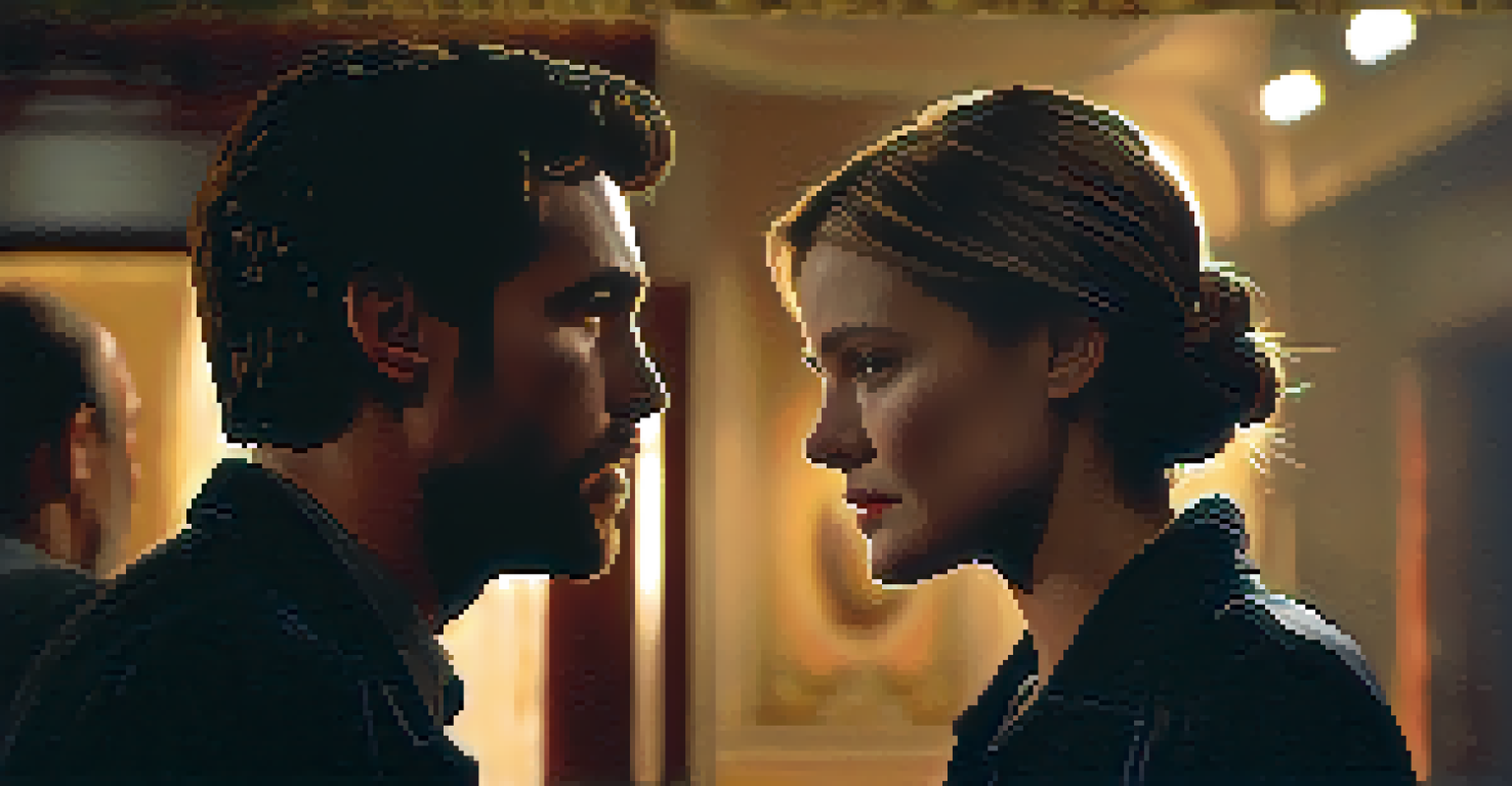How Film Editors Influence the Pacing of a Movie

Understanding the Role of Film Editors in Pacing
Film editors are the unsung heroes of cinema, working behind the scenes to shape the final product. They play a crucial role in determining the pacing of a movie, which significantly affects how audiences experience the story. By carefully selecting which shots to include or exclude, editors manage the rhythm of the film, ensuring it flows smoothly and keeps viewers engaged.
Editing is the process of selecting and preparing written, photographic, or film material for presentation.
Imagine a thrilling chase scene that feels like it's happening in real-time; that's the magic of editing. Editors can manipulate the duration of each shot to create a sense of urgency or calm, depending on what the scene demands. This ability to control time within the film is vital for building tension and emotional resonance.
Ultimately, a film editor's choices can make or break the pacing. They work closely with directors to understand the vision and then translate that into a cinematic rhythm that resonates with the audience. Their work is a blend of art and science, where each cut can evoke a different reaction from viewers.
The Impact of Shot Selection on Movie Pacing
One of the primary tools in an editor's toolkit is shot selection. By deciding which takes to use, they can influence the emotional tone and pacing of a scene. For instance, quick cuts can create excitement, while longer takes can foster contemplation and connection with the characters.

Think about a romantic moment in a film; an editor might linger on a character's expression to draw out the emotion. This deliberate choice shapes how the audience feels and reacts, allowing them to savor the moment. Conversely, in an action-packed sequence, rapid-fire cuts keep viewers on the edge of their seats.
Editors Shape Film Pacing
Film editors play a crucial role in determining the pacing of a movie, significantly affecting the audience's experience.
Effective shot selection not only affects pacing but also enhances storytelling. By intercutting between multiple storylines or perspectives, editors can build suspense and complexity, guiding the audience through the narrative seamlessly. This intricate dance of shots is what brings a film to life.
Using Rhythm to Enhance Emotional Engagement
Pacing is not just about speed; it's also about rhythm. Editors create a cadence that aligns with the emotional beats of the story. By varying the tempo throughout the film, they can evoke different feelings—whether it's joy, sadness, or tension.
The editor is the one who can create the pace and rhythm of the film through the art of editing.
For instance, during a climactic moment, an editor might use rapid cuts to heighten adrenaline, while a tender scene may slow down to allow viewers to absorb the emotional weight. This rhythmic interplay is essential in guiding the audience's emotional journey.
The editor's ability to manipulate rhythm contributes significantly to the overall impact of the film. It’s almost like conducting an orchestra, where each cut and transition adds to the symphony of storytelling, creating a memorable experience for the audience.
Transition Techniques That Control Pacing
Transitions are crucial in editing, serving as bridges between scenes that dictate pacing. Techniques like crossfades, cuts, and dissolves can either accelerate or slow down the narrative flow. A sharp cut can jolt the audience, while a slow dissolve can create a sense of reflection.
For example, in a horror film, abrupt cuts can amplify shock and surprise, keeping viewers on edge. In contrast, a gradual transition might be used in a drama to allow the audience to process emotions fully. Each choice impacts how the audience perceives the timing of events in the story.
Shot Selection Influences Emotion
The choice of shots can evoke different emotional responses and control the pacing, enhancing the storytelling.
By mastering transitions, editors can control not just pacing but also how the audience connects with the film's themes. It's a subtle yet powerful way to guide viewers through the narrative landscape, ensuring they feel the intended emotions at the right moments.
Balancing Action and Dialogue for Optimal Pacing
A key aspect of pacing is balancing action and dialogue. In scenes heavy with dialogue, an editor must ensure that the pacing allows for natural conversation flow while maintaining audience engagement. Too fast, and the dialogue can feel rushed; too slow, and the audience may lose interest.
In action sequences, the stakes are different. Editors often employ quick cuts and dynamic transitions to keep the energy high, drawing the audience into the excitement. Finding the right balance between these two elements is crucial for sustaining engagement throughout the film.
Ultimately, the interplay between action and dialogue creates a rhythm that keeps viewers invested. Editors are tasked with weaving these elements together in a way that feels cohesive and compelling, ensuring that the pacing serves the story effectively.
The Role of Sound Design in Influencing Pacing
Sound design is a powerful ally for editors in crafting pacing. The way sound is integrated into a scene can dramatically alter its rhythm and emotional impact. Sound effects, music, and silence all play pivotal roles in guiding audience reactions.
For instance, a suspenseful score can build tension, urging the editor to cut more rapidly to match the heightened stakes. Conversely, moments of silence can provide a stark contrast, allowing a scene's emotional weight to resonate more profoundly. The interplay between sound and visual elements is critical in shaping pacing.
Sound Design Enhances Pacing
Integrating sound design with editing helps to shape the rhythm and emotional impact of a film, guiding audience engagement.
By skillfully combining sound and editing, filmmakers can create an immersive experience that captures the audience's attention. The seamless integration of these elements enriches the storytelling, making the pacing feel both intentional and organic.
Case Studies: Films That Showcase Masterful Editing
Examining films known for their exceptional editing can illuminate how pacing influences storytelling. For example, 'Mad Max: Fury Road' is celebrated for its rapid pacing, achieved through relentless cuts and dynamic transitions that immerse viewers in a high-octane experience. The editor’s choices keep the adrenaline pumping, making every moment feel urgent.
On the other hand, films like 'Moonlight' utilize slower pacing to create a contemplative atmosphere. The editor's deliberate choices allow for moments of reflection, inviting the audience to engage deeply with the characters' emotional journeys. This contrast in pacing showcases the editor's ability to tailor the experience to the film's themes.

These case studies highlight the art of editing and its critical role in shaping a film's pacing. By analyzing how different films achieve their pacing, we can appreciate the editor's craft and the profound impact it has on the overall cinematic experience.